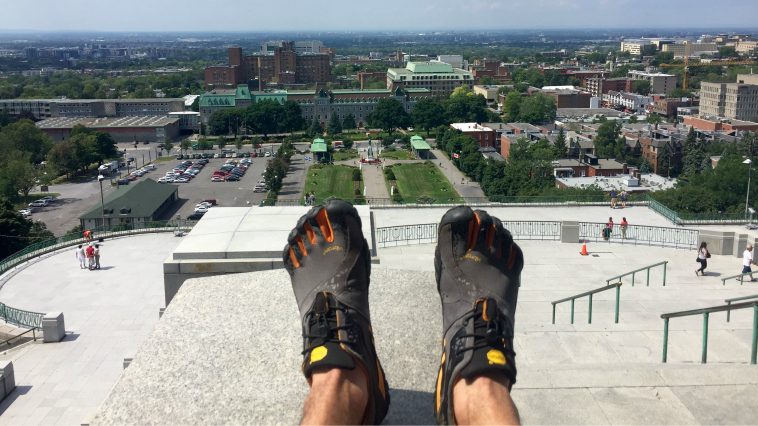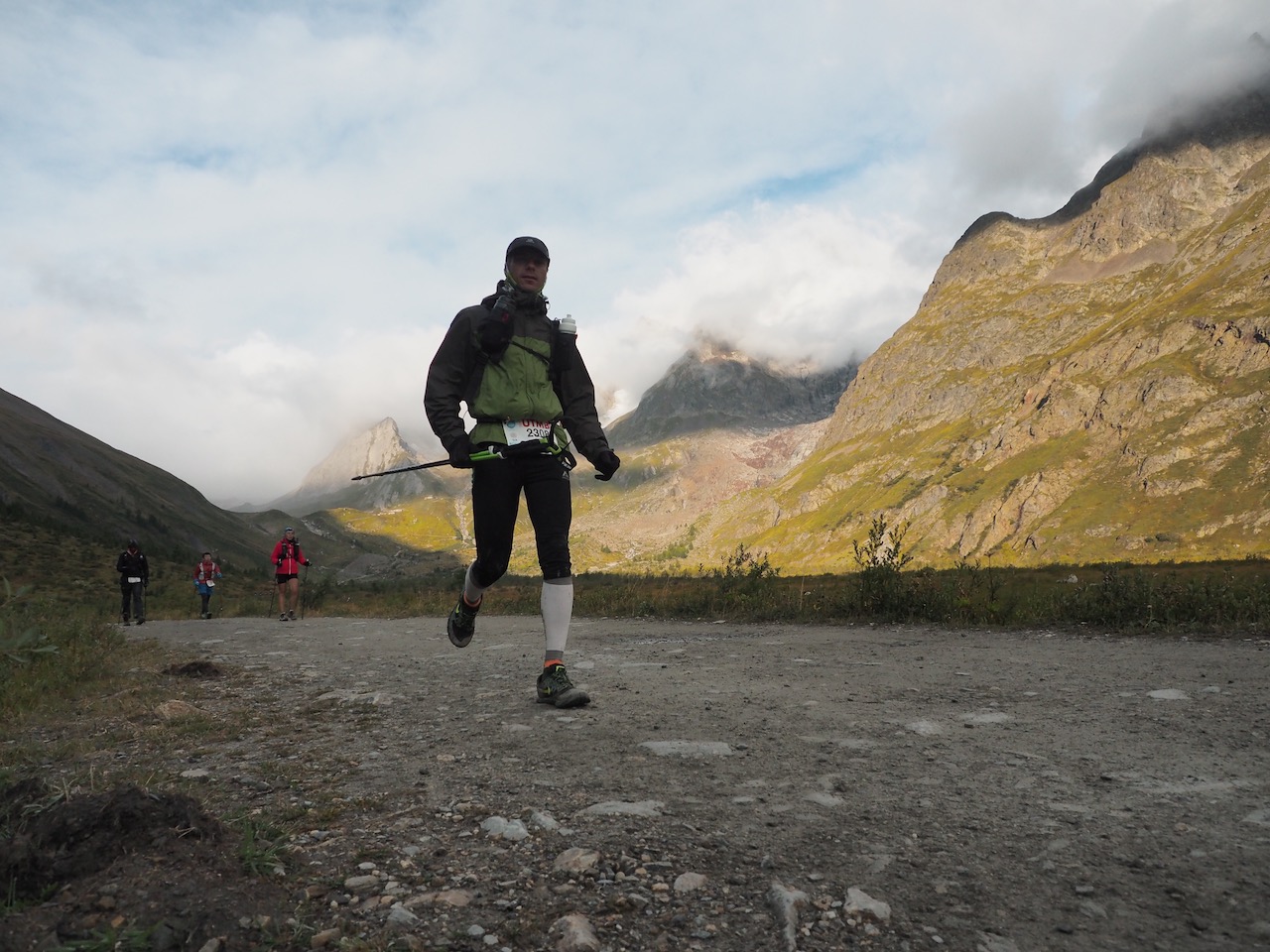In running, as in everything else, trends come and go. The minimalist style, very fashionable a few years ago, has now apparently give way to shoes with high stack height. Almost every manufacturer is constantly offering new models in this style with the promise of improved performance and reduced risk of injury.
How can you tell which direction to choose? I’m sure that most of you have had bad experiences with shoe selection and also have a good idea of what suits you best. In this article, I would like to provide a short overview on the effects of footwear on your running style. You will realize that the shoe is in fact a tool that you can adapt according to your needs.
To guide you in this holistic exercise, I have used the Running Clinic, a world-renowned continuing education organization dedicated to injury prevention for running professionals. All of the available published literature on running shoes is analyzed and deconstructed in order to make recommendations based on solid scientific and quantified evidence.
The Running Clinic does not receive any grants or sponsorships from shoe manufacturers. I am proud to be an ambassador for this independent, honest and rigorous organization.

What the Studies Say
Let’s first review the conclusions of the most recent scientific studies on the benefits and drawbacks of different types of footwear. We will then review the specific shoe recommendations for each type of runner.
Here’s what we know:
- The stabilization and movement control technologies promoted by many shoe manufacturers, such as ˝stabilizers˝ or ˝antipronators˝, do not produce the advertised effects and do not reduce the incidence of injury;
- Increasing the cushioning thickness of the shoe does not reduce load transfer to the knees and hips, regardless of the weight of the runner (even if overweight). Rather, the effect appears to be the opposite;
- The correlation between flat feet and outwardly angled knees and the incidence of injury has never been convincingly demonstrated. These variations in anatomy observed in many runners do not require any particular protection or support from the shoe in a majority of cases;
- Running at a high cadence (more than 180 +/- 10 steps per minute, or SPM) with a short stride, which lets the foot drop gently directly below the centre of gravity, is the most energy-efficient running technique in terms of energy expenditure and injury prevention;
- The heel strike far in front of the centre of gravity is favoured by the more cushioned shoes. It greatly increases the forces transmitted to the knees, hips and back;
- Minimalist shoes that mimic barefoot running promotes ˝lighter˝ running and faster cadence. It encourages ˝forefoot˝, ˝midfoot˝ and ˝proprioceptive heel˝ (subtle heel) strikes, all of which are well suited to the goals of high cadence and lightness of stride;
- The minimalist shoe, because of its impact on the quality of the stride, reduces the load transmitted to the knees, hips and lumbar region. However, it increases the load on the Achilles tendons, calves and foot structures.
An Index of Minimalism for All Shoes
The Running Clinic has set up a minimalism index that classifies all shoes according to five criteria. To understand this, consider that a shoe with higher stack height will have a low index of minimalism, while a shoe with an impact very similar to the bare foot will have a very high index.
The purpose of these parameters is to allow the recommendation of a type of shoe to runners in transition or to those who are injured by using a common metric. This promotes communication between professionals, runners and shoe retailers. The criteria are as follows:
- Weight of the shoe;
- Heel thickness;
- Flexibility of the shoe in length and torsion;
- Lack of stabilization and movement control mechanisms;Heel-to-toe elevation (drop).
We understand that footwear recommendations vary greatly depending on the type of injury and the alteration of running style strategies being considered. The idea is to rank the shoe the runner is currently wearing on the minimalism scale and advising a gradual transition to a higher or lower score as needed.
Recommendations for Different Types of Runners
It’s up to you to see which category you belong to! I must insist on the fact that the status quo is often preferable.
The experienced runner who is not injured and does not wish to improve his performance:
- No modifications to the stride or the shoe are required.
The experienced runner who is not injured but wishes to improve his performance:
- It will be beneficial to increase the minimalist index of the shoe in order to encourage an increase in pace to over 180 +/- 10 SPM and to promote a more delicate, silent and economical style of running.
The injured runner :
- The change of shoe type will be undertaken according to the type of injury. Lower the minimalist index if the injury is to the feet or calves and increase the minimalist index if the injury is to the knees, hips or lumbar region.
The new runner :
- A shoe with a high minimalist index should be favoured, regardless of the runner’s weight or the shape of the feet, in order to increase the pace to more than 180 +/- 10 SPM and to promote a more delicate and silent running style;
- The high minimalism shoe naturally encourages a more efficient running style and reduces impact force;
- The increased risk of foot injuries induced by the high index shoe will be avoided by a training program with a very progressive start in duration and intensity. In this regard, the Running Clinic progressive training program can be consulted.
Children :
- Choose a shoe with a high minimalist index and a maximum of barefoot at home;
- Run with a smile!
Planning your transition
Our bodies have a phenomenal capacity to adapt, but we have to give it time.
When a transition is planned, it is suggested to increase the time spent in your new shoes by one minute per workout and to aim for four weeks of transition per 10-20% of minimalism index.
It is therefore quite possible to anticipate at least three months for a very gradual transition. During a transition to minimalist footwear, there is a risk of Achilles tendon injury, stress fracture of the foot, or plantar fasciitis if an adequate transition is not respected.
In order to promote the body’s adaptation mechanisms, it is also recommended to spread (not increase!) your training over a minimum of four sessions per week. It is therefore preferable to run a total of 30 kilometers in a week spread over five 6 kilometer sessions rather than over two 15 kilometer sessions.
Most running watches on the market allows you to register your cadence. Monitoring this performance indicator is obviously very useful. Furthermore, a stride analysis by a qualified professional is a strategic investment.
Translation : William Chabot-Labbé
Must read :
- The side effects of anti-inflammatory drugs: your need-to-know
- Is Running Ultras the Worst Idea Ever?
- Beware, alcohol affects fitness!
Simon Benoit is an emergency critical care physician. In addition to maintaining an office practice focused on sports medicine, he is a member of the Quebec Association of Sports Doctors. He also has a degree in physiotherapy and chiropractice and is an ambassador for La Clinique du Coureur.


